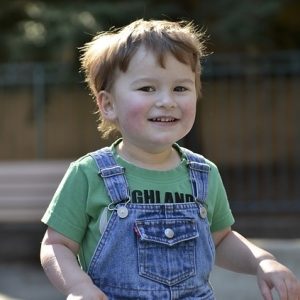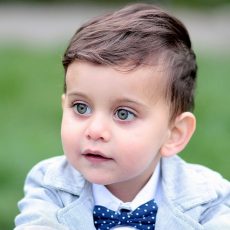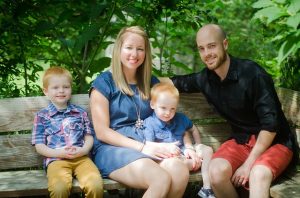What is Infant Start Therapy?
Early Intervention with Infant Start Therapy May Eliminate Autism Symptoms. According to a pilot study published in the Journal of Autism and developmental Disorders on 12 September 2017, an interaction-based therapy known as Infant Start Therapy may help improve language and behavior skills in infants with signs and symptoms of autism.
By age 3, infants who received the treatment had fewer symptoms of autism than children who did not receive the therapy. The researchers also found that caregivers quickly learn how to properly administer Infant start therapy and adhere to it. Parents also rate their experiences very highly.
Their findings suggest that the therapy could be a more accessible and inexpensive alternative to most of the conventional therapies which may require up to 30 hours of one-on-one time with therapists per week.
How is Infant Start Therapy Delivered?
Infant Start Therapy was administered over a 6-month period to 6 to 15 month old children who exhibited symptoms of autism, such as decreased engagement and social interest, lack of intentional communication, repetitive movement patterns and decreased eye contact.
The treatment was delivered by parents and has hence proven to be scalable and easier to implement than other forms of conventional therapy. This was attributed to the fact that children usually spend most of their time in the hands of parents who are most in tune with them.
Six out of seven children in the study caught up in their language and learning skills by the time they were two or three years old. In most cases, children with autism spectrum disorder are not even diagnosed by then.
The lead investigator, Sally J. Rogers, professor of MIND Institute and department of psychiatry at the University of California, Davis, said it was the parents who made all the difference because it’s the little moments of feeding, diapering, being on the swing, going for a walk, playing on the floor that are the important learning movements for infants. Therefore, parents can easily capitalize on these moments in ways that nobody else can.
Early Identification and Intervention is Crucial
 Kids diagnosed with ASD (Autism Spectrum Disorder) usually receive intervention when they are three to four years old. This is 6 to 8 times later than the toddlers who participated in this pilot study. However, studies show that the earliest signs and symptoms of ASD may be present even before the toddler’s first birthday. Children first learn communication and social interaction during infancy. This is the main reason why parents of children with autism and researchers have been working on how autism can be identified early in the toddler’s life in order for intervention to begin sooner.
Kids diagnosed with ASD (Autism Spectrum Disorder) usually receive intervention when they are three to four years old. This is 6 to 8 times later than the toddlers who participated in this pilot study. However, studies show that the earliest signs and symptoms of ASD may be present even before the toddler’s first birthday. Children first learn communication and social interaction during infancy. This is the main reason why parents of children with autism and researchers have been working on how autism can be identified early in the toddler’s life in order for intervention to begin sooner.
Early detection is essential for effective autism treatment because children with ASD symptoms can begin therapy earlier in life, to mitigate or prevent the full onset of signs and symptoms. Early intervention can also prevent lifelong and severe disability. According to Ozonoff, Director of MIND Institute’s Infant Sibling study, the main goal of the early detection project is to follow children at risk of ADHD or autism from birth to age 3. This will help physicians make referrals for intervention immediately when the symptoms of autism are identified preferably during the child’s early days of life.
Treat Early Signs of Autism with Infant Start Therapy
Treatment based on Infant Start Therapy involves various activities that aim to treat early signs of autism in infants such as:
- Unusual visual fixations
- Delayed sound development
- Delayed intentional communication
- Abnormal repetitive behaviors
- Decreased interaction (greater interest in toys and other objects).
Treatment is provided at home by parents and trained therapists during daily routines including natural play. Parents were trained to concentrate interactions with their infants on supporting their individualized interests and developmental needs. Parents were also coached to embed these activities and practices into all their care taking and play by focusing on creating fun and pleasurable routines that increase their kids’ opportunities for learning.
Parents and caretakers were encouraged to follow their children’s subtle cues, activities and interests and gauge them in ways that enhanced their child’s engagement and attention. The treatment focused on improving:
- Infants’ attention to the voices and faces of their parents
- Interactions between the parent and infant that attract the child’s attention bringing delight and smiles to both.
- Parent imitation of intentional sounds and actions made by the infant.
- Parent’s use of different toys and items to support the infant’s social attention rather than compete with it.
Infant Start Therapy treatment sessions include:
- Greetings and progress sharing
- Parent play warm-up period followed by discussion of activities and goals of intervention.
- Parent-child interaction in a normal daily routine while fostering communication, appropriate play and social engagement, with coaching from trained therapists.
- Parents applying the approach with their toddler in 1 or 2 additional routines with caregiving activities or toys.
Lower Autism Scores by 18 to 36 months
The infants’ autism levels were assessed using two screening tools: the ADOS (Autism diagnostic observation Schedule) administered at 18, 24 and 36 months and the AOSI (Autism observational Scale for Infants) administered every 3 months. Visual processing and language skills were also assessed using the Mullen Scales of Early Learning. The researchers also tracked the progress and outcomes of 4 symptomatic baby siblings who were eligible for Infant Start Therapy but whose parents refused to participate in this pilot study.
By the time they were 9 months old, all of the infants in the study had similar or even greater symptoms of ASD symptoms than the comparison group of children who were later diagnosed with autism. However, by age three, the kids who had received the treatment had fewer symptoms compared to the children who did not receive the intervention.
At the end of this initial study, 2 of the 7 infants in the treatment group were diagnosed with autism, compared with 3 of the 4 in the control group.
The results were quite incredible. All babies showed a delay in visual and language skills between nine and fifteen months, but by eighteen months, infants who underwent the treatment began to gradually reverse course and had already caught up with typically developing kids by age 3.
Although the findings need to be properly established and confirmed in larger samples, the idea that infants with autism symptoms can be identified and start early intervention is still an exciting development.
More on understanding the common signs of Autism!







 Accept and understand the situation whole heartedly. Although it is difficult to accept that your child’s life can never be normal like others, the best way to cope after an autism diagnosis is to recognize the needs of the child.
Accept and understand the situation whole heartedly. Although it is difficult to accept that your child’s life can never be normal like others, the best way to cope after an autism diagnosis is to recognize the needs of the child.

 It is not uncommon for parents of other children to encourage their child to avoid a teenager with ADHD as they may not understand the condition and label them as a trouble maker. Furthermore, peers that do not understand the genetics of the disorder may pick on or even bully your teenager.
It is not uncommon for parents of other children to encourage their child to avoid a teenager with ADHD as they may not understand the condition and label them as a trouble maker. Furthermore, peers that do not understand the genetics of the disorder may pick on or even bully your teenager.

 These children were clumsy, experienced no empathy towards their peers and lacked the ability to express themselves through non-verbal communication. He felt that this was different from autism even though some of the symptoms were similar in nature.
These children were clumsy, experienced no empathy towards their peers and lacked the ability to express themselves through non-verbal communication. He felt that this was different from autism even though some of the symptoms were similar in nature. There have been no real developments in this disorder to find out what actually causes it, but it is believed to be genetic in some cases.
There have been no real developments in this disorder to find out what actually causes it, but it is believed to be genetic in some cases.

 If your baby has sensitivity to sounds, lights, or touch but seems otherwise oblivious to pain, like not becoming alarmed once they touch something hot, this really is a sign to watch out for.
If your baby has sensitivity to sounds, lights, or touch but seems otherwise oblivious to pain, like not becoming alarmed once they touch something hot, this really is a sign to watch out for.
 Adolescents and teenagers with Asperger’s syndrome have deficits in three main areas: physical coordination, communication and development of various interests.
Adolescents and teenagers with Asperger’s syndrome have deficits in three main areas: physical coordination, communication and development of various interests. It is particularly important to understand that Asperger’s is a lifelong condition. However, it may stabilize over time and significant improvements may be seen. Most individuals with Asperger’s Syndrome are able to learn and interpret a range of social skills and many are able to live normal lives. In fact, some typical traits of Asperger’s Syndrome such as focused interests and attention to detail can increase chances of career success. Many adults are usually diagnosed with Asperger’s Syndrome when seeking help for other related issues such as depression and anxiety. However, diagnosis of Asperger’s Syndrome should be made by a medical professional to rule out other related conditions and discuss proper interventions.
It is particularly important to understand that Asperger’s is a lifelong condition. However, it may stabilize over time and significant improvements may be seen. Most individuals with Asperger’s Syndrome are able to learn and interpret a range of social skills and many are able to live normal lives. In fact, some typical traits of Asperger’s Syndrome such as focused interests and attention to detail can increase chances of career success. Many adults are usually diagnosed with Asperger’s Syndrome when seeking help for other related issues such as depression and anxiety. However, diagnosis of Asperger’s Syndrome should be made by a medical professional to rule out other related conditions and discuss proper interventions.
 Studies are few but promising
Studies are few but promising
 Kids diagnosed with ASD (Autism Spectrum Disorder) usually receive intervention when they are three to four years old. This is 6 to 8 times later than the toddlers who participated in this pilot study. However, studies show that the earliest signs and symptoms of ASD may be present even before the toddler’s first birthday. Children first learn communication and social interaction during infancy. This is the main reason why parents of children with autism and researchers have been working on how autism can be identified early in the toddler’s life in order for intervention to begin sooner.
Kids diagnosed with ASD (Autism Spectrum Disorder) usually receive intervention when they are three to four years old. This is 6 to 8 times later than the toddlers who participated in this pilot study. However, studies show that the earliest signs and symptoms of ASD may be present even before the toddler’s first birthday. Children first learn communication and social interaction during infancy. This is the main reason why parents of children with autism and researchers have been working on how autism can be identified early in the toddler’s life in order for intervention to begin sooner.
 Schools must now accommodate children with special needs and developmental disorders, however some schools do a better job at this task then others. What you have available in your area is, of course, a deciding factor in what you can do. The other important factor to keep in mind is the needs of your autistic child.
Schools must now accommodate children with special needs and developmental disorders, however some schools do a better job at this task then others. What you have available in your area is, of course, a deciding factor in what you can do. The other important factor to keep in mind is the needs of your autistic child. Certain treatments for autism, depending upon what they are, will be more helpful than others that you try. Always remember that professionals do not know everything, and that autism does not have a cure, so be cautious and careful as you seek the right treatment.
Certain treatments for autism, depending upon what they are, will be more helpful than others that you try. Always remember that professionals do not know everything, and that autism does not have a cure, so be cautious and careful as you seek the right treatment. Visual cues, a demonstration, and spoken words are usually necessary and helpful when you communicate with your child with ASD. At this point, we have not discovered the cure; however this does not suggest that your autistic child is beyond being educated and developing in many areas.
Visual cues, a demonstration, and spoken words are usually necessary and helpful when you communicate with your child with ASD. At this point, we have not discovered the cure; however this does not suggest that your autistic child is beyond being educated and developing in many areas.